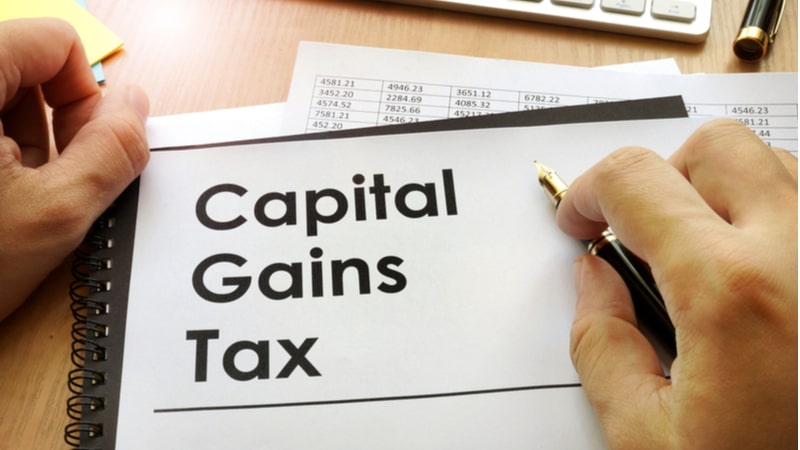Capital Gain Tax – A capital gain may be characterized as any benefit earned from the selling of a capital asset. The benefit earned comes within the division of profits. It is also necessary to pay a tax on the income earned The tax charged is called capital gains tax which can be both long-term or short-term. The tax imposed on long-term & short-term gains begins at 10% and 15% respectively.
Under the Income Tax Act, capital gains tax in India does not have to be charged if the owner inherits the property and that there is no selling. That being said, if the individual who has inherited the property wishes to sell it, the tax has to be charged on the revenue generated by the sale. Examples of capital assets include jewellery, machinery, patents, cars, home, etc.
How to Calculate Capital Gains?

Based on the duration of time the commodity has been kept, the capital gains estimate can vary. Some of the significant points that people must be mindful of when measuring capital gains are laid out below:
- Cost of improvement: if there are any costs paid by the purchaser as a result of any changes or improvements rendered to the property. That being said, any change made prior 1 April 2001 cannot be counted.
- Acquisition cost: the sum of money spent by the purchaser to buy the land.
- Full value consideration: the sum of money earned by the purchaser as a result of the transfer of the land. Capital gains are paid by the year in which the deal was made, even though the revenue wasn’t really earned in that specific year.
In such situations in which the capital asset is still the property of the taxpayer, the expense of sale, as well as the cost of improvement of the former owner, will be considered.
Capital gain can be classified as long term & short term capital gain. We have covered that topic in our previous post.
Must read – What is long term & short term capital gain?
How to calculate Short capital returns as set out below.
- First, the person needs to understand the maximum value of the asset.
- Next, the person should follow the mentioned deductions:
– Costs that were accrued as a result of the transition.
– The sum of money that has been invested in the purchase.
– The sum of money invested in improvement.
- The person should deduct from the number determined by adopting the aforementioned measures any exemptions granted under Section 54B, Section 54F, Section 54EC, and Section 54.
Here is an illustration of how you can calculate long-term capital gains:
Price of the house when it was purchased – ₹30 lakh
Financial Year on which house was purchased: 2011-2012
Financial Year on which house was sold: 2019-2020
The amount for which house was sold for: ₹50.5 lakh
Inflation-adjusted cost: (280/167) x 30 = ₹50.29 lakh
long term Capital Gains: 50.50 lakh – 50.29 lakh = ₹21,000
How to calculate Short capital returns as set out below
In order to measure short-term capital returns, the following process must be practised for people.
- First, the person wants to understand the full value of the land.
- Next, the points listed below should be deducted.
– Expenditures which have been expended to upgrade the house.
– Expenses paid for the purchase of the land.
– Any costs sustained in connection with the transfer of the land.
The number that is measured after the deduction is short-term capital gain.
The formula for estimating the short-term capital gain is the estimation of maximum valuation less the value of the transfer minus the value of the improvement and purchase of the land.
Here is an illustration of how you can calculate short-term capital gains:
Price of the house when it was sold: ₹55 lakh
Expenses incurred for brokerage, commissions etc: ₹30,000
Net sale consideration: ₹.54,70,000
Price the house when it was bought: ₹35 lakh
Amount spent for the improvement of the house: ₹3 lakh
Gross short term Capital Gain: ₹16,70,000
Tax exemptions under Sections 54, 54B, 54D, 54EC, 54ED, 54F, 54G: Nil
Net short term Capital Gain: ₹16,70,000
Short Term Capital Gains: 30% of ₹16,70,000: ₹5,01.000



